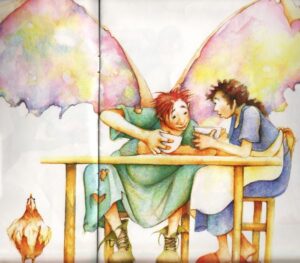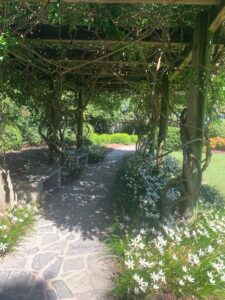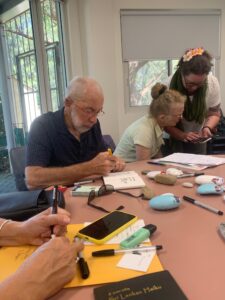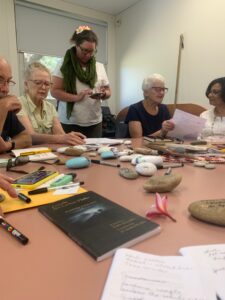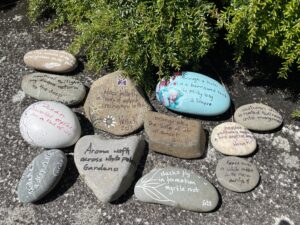

Allan Clarke’s The Dark Emu Story, produced by Blackfella Films
(First Australians, Redfern Now), delves deep into the controversy,
enlightens our understanding of Australian history and provides a platform
for First Nations peoples to share their story.
The DARK EMU Story is a phenomenon.
The book, Dark Emu by Bruce Pascoe has sold more than a quarter of a million copies,
received multiple awards and is one of the best-selling books of its kind.
A thought provoking, revelatory and inspiring documentary
challenges Australia to rethink its history and ignites a raging debate.
The 2014 best-selling book makes explosive claims that First Nations people
were not only hunters and gatherers but also farmers who were part of a complex
economic system.
Inspired by the journals of British explorers, Pascoe prosecutes
the contentious argument that First Nations people settled in villages,
devised extraordinary methods of aquaculture and astronomy
and were the world’s first bakers. The author’s compelling narrative
smashes the orthodoxy and turns the view of ‘traditional’ Aboriginal life
on its head.
But Dark Emu ignited a fierce debate, sparking searing criticism.
Academics and conservative commentators lined up to scorn Pascoe’s work
and question the knowledge of the First Australians. Amidst the storm,
a public war of words then swirled over the Aboriginality
and identity of Pascoe himself. One review wrote:
As questions arose over the merits of the contents of the book,
old questions re-surfaced about the authenticity of the author Bruce Pascoe.
In this feature documentary, we will delve into this search for identity,
and in so doing spark yet more conversations about where we might be heading
as a nation. The documentary will also be a platform for First Nations people
to tell their own stories about their deep past. How new discoveries
are shedding light on who their ancestors were and how they survived
and prospered for at least 65,000 years on the most arid continent
on earth.
Besides being at the movie and participating in the Annual Film Festival,
I enjoyed being in the Stste Theatre taken in by the wonderful restoration.
I think it holds about 2.000 people and it was great to see the many hundreds of people,
many young, enjoying the last weekend of the Sydney Film Festival.
Allan Clarke’s The Dark Emu Story, produced by Blackfella Films
(First Australians, Redfern Now), delves deep into the controversy,
enlightens our understanding of Australian history and provides a platform
for First Nations peoples to share their story.
Thanks to my friend Pip Griffin for encouraging me to get into the city and met her for the movie.
A very proactive afternoon with Pip on poetry beforehand.




Some of the wonderful designs in the State Theatre. It was an experience to just enter the theatre.


And a standing ovation for Bruce Pascoe



























